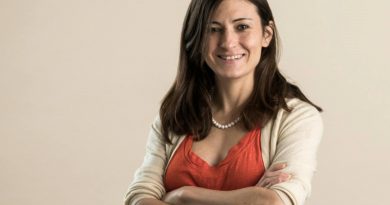Overcoming challenges in Point of Care diagnostics in veterinary medicine
 insights from industryNaomi UrbinaProduct Development Scientist and Clinical VeterinariannanoComposix, (now a Fortis Life Sciences Company)In this interview, NewsMedical speaks to Dr. Naomi Urbina, senior scientist at nanoComposix (now a Fortis Life Sciences Company), about recent developments in Point of Care diagnostics in veterinary medicine and how nanoComposix services can help overcome potential challenges in the field.
insights from industryNaomi UrbinaProduct Development Scientist and Clinical VeterinariannanoComposix, (now a Fortis Life Sciences Company)In this interview, NewsMedical speaks to Dr. Naomi Urbina, senior scientist at nanoComposix (now a Fortis Life Sciences Company), about recent developments in Point of Care diagnostics in veterinary medicine and how nanoComposix services can help overcome potential challenges in the field. Can you provide a definition of point-of-care diagnostics in veterinary medicine?
These are diagnostic devices that are portable and employed at the location where a patient presents. This is very useful because of the nature of veterinary medicine. Large animal vets go out into the field to visit barns, farms or ranches for their patients. It is very helpful to have a portable diagnostic device that can run tests patient-side, and then the vet can implement a treatment plan without having to return later. On the small animal side, point-of-care tests are also used in the clinic. Patients come in to see the clinician, and it is common for clinics to have their own lab analyzers or point-of-care tests there to run during the same visit.

Image Credit: nanoComposix/Fortis Life Sciences
What are the changes that you have seen in the field over the last decade?
Speaking from the small animal side, years ago, there were only two major players in the point-of-care diagnostic field in veterinary medicine – IDEXX and what is now Zoetis.
However, over the years, there have been more and more startups and smaller companies (like Wellness Ready in the picture above) that are interested in putting out products for point-of-care tests in vet med. This is great for me as a clinician because I would like to see more options, but it has still been dominated by the big players.
What are some of the challenges faced by vets in terms of diagnostics?
One of the challenges vets have is that when new diagnostics come out from one of these smaller players, it is hard for them to evaluate the quality and the performance of these tests. If it is from a large reputable company, it is easier to trust their test due to historical performance out in the field.
The other challenge is that these point-of-care tests must be robust out in the field. You can imagine vets going out to barns and farms, often in inclement weather like snow or ice or hot and humid conditions. These point-of-care tests have to be able to withstand those conditions.
Also, most of these point-of-care tests are qualitative, especially the rapid tests. There is a need for quantitative tests. That is a challenge because quantitative tests require a reader of some kind, so the readers themselves need to be portable and able to perform well out in the field.

Image Credit: nanoComposix/Fortis Life Sciences
How can nanoComposix services help overcome these challenges?
nanoComposix provides assay development services. We specialize in lateral flow assay development, but we are not just limited to that platform. We help develop a complete product from start to finish for veterinary diagnostics. To ensure that the product has good performance and is of high quality, we support our clients to perform verification and validation testing of the assay in order to meet the needs of the clinical intended use.
We will run accelerated stability testing as well as recommend flex studies to try to determine the effects of field conditions on the assay. Then we optimize the assay accordingly.
We have also worked with clients who have their own engineering teams to try to develop a custom reader that will be required for a quantitative test. We develop the biochemistry on the test strip, and we coordinate with them to make sure that the reader can see that well, and we optimize the assay accordingly. Alternatively there are off-the-shelf portable readers like the Chembio Cube that we have integrated into some of our assay designs.
Can you explain some of the platforms that exist in point-of-care veterinary diagnostics?
Many small animal clinics have in-house lab analyzers, such as a flow cytometer that can run a complete blood count or a chemistry machine that can run a metabolic panel. Vets often employ urine dipstick tests like in human medicine. There are quite a few lateral flow rapid tests out there for veterinary applications, infectious disease detection, and detection of disease-specific markers.
There are also niche in vitro diagnostic devices like handheld glucometers and ketone monitors specifically calibrated for use in animals that are used in vet med. There are also lower-tech, traditional chemical tests like the milk mastitis test.
What are the lateral flow devices available for practitioners of veterinary medicine and how are these used in the field?
Vets use antigen heartworm tests and antigen feline leukemia tests on a daily basis. There are also antibody tests for tick-borne diseases and analyte-specific tests for particular disease states. In the small animal world, we mainly use these as point-of-care at the clinic, but there are also mobile vets that travel to a pet's home. They can take these tests with them and then use them out in the field during a house call visit. Most of these only require a few drops of blood to run followed by a chase buffer and results are produced within the time of an appointment, meaning that treatment can be determined and employed all in the same visit. The results are usually qualitative and easy to read without any kind of special reader or device.

Image Credit: nanoComposix/Fortis Life Sciences
What advantages do these have over other diagnostic platforms?
Lateral flow tests have been very popular for many years because they are simple to use, relatively inexpensive to manufacture, and portable. For these reasons, they can be used at the point of care. They have really short run times, which makes it easy to figure out a diagnosis and a treatment without having to come back for an extra visit or a follow-up. Also, they do not require any kind of sophisticated equipment like a reader.
How is molecular diagnostics evolving in the field of veterinary medicine? What is the demand for these types of assays?
There is a growing demand for molecular assays, not just in veterinary medicine but in human medicine too. Molecular tests are starting to expand to over-the-counter availability. The appeal of the PCR test is that it is usually the gold standard for measuring certain infectious diseases. It would be nice to be able to have a point-of-care PCR machine that vets could run in the clinic. Some companies like Fluxergy are working on developing this platform for the veterinary field.
What are some of the unique assay platforms that you have seen in this space?
One of the more unique platforms that I have seen is the melding of molecular tests with the lateral flow platform. The idea behind this is to run an isothermal amplification reaction, then perform the readout on a lateral flow strip so there is no need for a specialized reader. That is a really clever way of combining two technologies to make this system more portable in the field. nanoComposix offers a variety of these strip configurations so that they can be integrated into a client’s molecular assay.
How is nanoComposix prepared to support the development of these new vet assays coming into the market?
We have supported smaller veterinary startups with their assay development as well as larger diagnostic clients in this field. We are very strong in terms of our science and we let our scientific background lead us through the development process and the assay optimization process so we can creatively customize assays to whatever our client’s product needs are.
We also have our flagship gold nanoshell particle (see photo above), which can offer enhanced sensitivity over traditional gold nanoparticles. Additionally, I am a practicing clinical veterinarian, as well as a product development scientist, so I can offer unique insight into how to meld the science with the end application.
About Naomi Urbina
Naomi Urbina is a practicing small animal clinical veterinarian in San Diego and product development scientist at nanoComposix/Fortis Life Sciences. She has 12 years of experience developing immunoassays for various applications, from feasibility through product transfer. She has worked at BioLegend, Zoetis, and Cue Health. She also serves on the board of New England Animal Health, a non-profit antibody reagent company for animal vaccine application.
feasibility through product transfer. She has worked at BioLegend, Zoetis, and Cue Health. She also serves on the board of New England Animal Health, a non-profit antibody reagent company for animal vaccine application.
Sponsored Content Policy: News-Medical.net publishes articles and related content that may be derived from sources where we have existing commercial relationships, provided such content adds value to the core editorial ethos of News-Medical.Net which is to educate and inform site visitors interested in medical research, science, medical devices and treatments.
Source: Read Full Article



